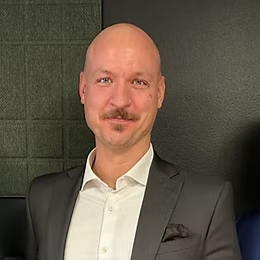Can we listen and read at the same time?
Can we really absorb two streams of information at once? As multitasking becomes the norm in our digital lives, this blog explores what science says about our ability to listen and read simultaneously—and what that means for learning and communication.

Ever watched a PowerPoint presentation with lots of text and a person talking at the same time? Thought so. And afterwards, having a a hard time really remembering anything? Instead of remembering what the presentation was all about, we remember fragments of what the person said and fragments of the text.
Or have you attended a digital education where there is text and a voice over at the same time? Same thing happens again: we remember fragments of the speaker's voice or fragments of the text.
That's all right. This is how our brain works.
In Neuroscience, a lot of research is done on the brain and our memory capacity. The part of the brain that registers sound is the Auditory cortex and it is located in each half of the brain. This means that we can hear several things at the same time. If two people are talking to each other, we can still hear them both. But can we focus and understand both? No, for that function of the brain, the broca or wernicke network, there is only one.
This is why it becomes a bottleneck and why we can only focus and understand one source of sound at a time.
But text and sound should go well then? It is true that there is Visual cortex in both halves of the brain, but if we read text, the brain processes it as if we read the text aloud and it goes via Auditory cortex and on to the broca or wernicke network in order for us to understand what we read. That is the bottleneck and we that’s why we can’t listen to a voice and read at the same time. And it gets even worse if we have a voice that says the same thing we read.
But what should we do then?
If we want to strengthen our messages, the first thing we need to do is to remove all long texts from our PowerPoint presentations. Less is more – and better. Research shows that single words can work very well to support what we want to say (seven supporting words seems to be optimal). On the other hand - the best thing to do, is to get rid of all the words and just use images that support what we want to say.
And if we want to streamline learning in our digital educations, we only have one choice. Text or sound. Not both of them at the same time.
So, why do so many e-learning productions use a combination of text and sound? Unfortunately, I think there’s a lack of focus on the most important thing: streamlining learning. Getting the effects that we want.
What we really need is a focus on how we create effective learning based on how we humans and our brains work.



